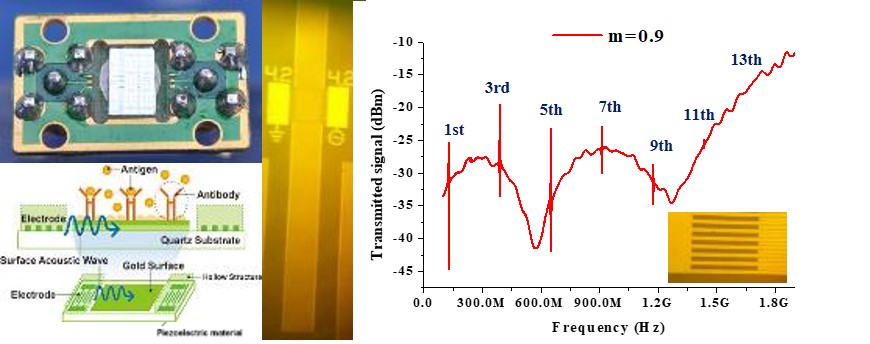Involved People: S. Rizzato, M.S. Chiriacò, A.G.Monteduro, E.Primiceri, A. Milone, G.Maruccio
Collaborations: V. Tasco and A. Passaseo (Lecce), F. Ferrara (STMicroelectronics-Lecce)
Surface acoustic waves (SAWs) are key elements for modern technologies, from communication systems (RF filters and resonators) to touch screen displays, wireless RFID tags, etc. SAW components have been also employed in sensing devices because of significant advantages with respect to bulk acoustic waves, and in microfluidics and lab-on-chip for fluid handling, droplet generation and manipulation, cell sorting, etc. Combined to magnetic materials, SAWs allowed coupling to ferromagnetic resonances (FMRs) and spin pumping through elastically-driven FMR relaxation in a non-magnetic metal. A very interesting field of research then concerns the combination of SAWs with semiconductors, where the traveling piezoelectric potential can be exploited to manipulate and transfer carriers/spins. In our group, we investigate SAW devices for these applications.
For example, in a recent publication, we demonstrated the excitation of surface acoustic waves in the GHz regime on GaAs without using expensive sub-micrometer/nano fabrication techniques. Instead of reducing the fabrication pitch size, the operating frequency of SAW delay line was here increased by adopting an IDT geometry, which was never employed before on GaAs and promotes the generation of higher harmonic modes. In our device, choosing an appropriate value of metallization ratio, it was possible to observe up to the 13th harmonic that corresponds to a frequency of about 1.7 GHz. [S. Rizzato, M. Scigliuzzo, M. S. Chiriacò, P. Scarlino, A. G. Monteduro, C. Maruccio, V. Tasco and G. Maruccio, Excitation and time resolved spectroscopy of SAW harmonics up to GHz regime in photolithographed GaAs devices, Journal of Micromechanics and Microengineering 2017, Vol. 27, p. 125002, issn. 0960-1317, http://dx.doi.org/10.1088/1361-6439/aa8186.]


